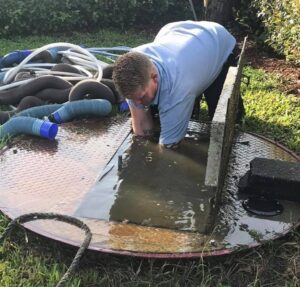In the realm of agriculture, the efficient management of waste is a critical aspect of ensuring environmental sustainability and farm productivity. Farms, both large and small, often utilize septic systems to handle sewage and wastewater. However, in certain scenarios, farms might require a septic lift station to manage their sewage effectively. These stations play a crucial role in ensuring the smooth flow and disposal of waste, contributing significantly to the overall functionality and cleanliness of the farm. In this article, we’ll delve into the reasons why a farm might need a septic lift station and explore its importance in agricultural settings.
Understanding Septic Lift Stations
Before delving into why farms might require a septic lift station, it’s essential to understand what these stations are and how they function. Septic lift stations are wastewater pumping systems designed to transport sewage or effluent from low-lying areas or locations where the terrain doesn’t allow gravity flow to the main septic system or municipal sewer lines. These stations consist of various components such as pumps, pipes, controls, and a tank or pit where the wastewater accumulates before being pumped to its intended destination.
Reasons Why Farms Need Septic Lift Stations
Varied Topography
Farms often encompass diverse landscapes and terrains. Some areas might be situated at higher elevations, while others could be in low-lying regions. In scenarios where the farm topography doesn’t facilitate natural gravity-based sewage flow towards the main septic system, a septic lift station becomes indispensable. Lift stations enable the efficient movement of wastewater from lower-lying areas to higher ground, ensuring it reaches the main septic system or disposal site.
Distance from Main Sewer Lines
Remote or rural farms may be located far from municipal sewer lines. In such cases, constructing a septic lift station becomes necessary to manage sewage effectively. Lift stations allow farms to overcome the distance barrier by pumping sewage to a more accessible location or even connecting it to a municipal sewer line if feasible.
Volume and Flow Control
On farms with a high volume of wastewater production or fluctuating usage patterns, controlling the flow and managing sewage becomes critical. Septic lift stations come equipped with control systems that regulate the flow of wastewater, ensuring it moves consistently and preventing backups or overflows. This capability is especially crucial during peak periods or times of increased water usage, such as harvesting seasons or livestock management activities.
Soil and Environmental Considerations
Some farms might have soil conditions that make traditional septic systems less effective. For instance, areas with high water tables or poor soil drainage may require alternative methods for sewage disposal. Septic lift stations offer a solution by transporting wastewater to more suitable locations or treatment facilities, thereby minimizing the risk of soil contamination or environmental damage.
Expansion and Future Growth
As farms expand or anticipate future growth, their wastewater management needs may evolve. Installing a septic lift station allows for scalability, accommodating increased sewage production without compromising efficiency or environmental safety. It provides the flexibility to adapt to the changing requirements of a growing agricultural operation.
Benefits of Using Septic Lift Stations on Farms
Enhanced Efficiency and Reliability
Septic lift stations streamline the process of wastewater management on farms, enhancing overall efficiency and reliability. By efficiently transporting sewage to designated areas or treatment facilities, these stations minimize the risk of blockages, backups, or system failures, ensuring uninterrupted farm operations.
Environmental Preservation
Proper sewage disposal is crucial for preserving the environment and preventing water contamination. Septic lift stations facilitate the proper containment and movement of wastewater, reducing the likelihood of pollutants entering water bodies or affecting soil quality. This contributes to maintaining a sustainable and eco-friendly farming environment.
Cost-Effectiveness
While the initial installation of a septic lift station may involve expenses, its long-term benefits often outweigh the costs. By preventing potential sewage-related issues that could incur substantial repairs or environmental cleanup expenses, these stations prove to be a cost-effective investment for farms in the long run.
Compliance with Regulations
Adhering to environmental regulations and standards is imperative for farms. Septic lift stations help farms comply with regulatory requirements regarding sewage disposal and environmental protection. By ensuring proper waste management practices, farms can avoid legal issues and penalties associated with non-compliance.
Conclusion
In conclusion, a septic lift station play a crucial role in ensuring effective wastewater management on farms. Their ability to overcome topographical challenges, regulate sewage flow, cater to varying farm sizes, and maintain environmental sustainability makes them an essential component of modern agricultural practices. By investing in these systems, farms can optimize their operations, reduce environmental impact, and comply with regulatory standards, thus contributing to a more sustainable and efficient agricultural industry.


